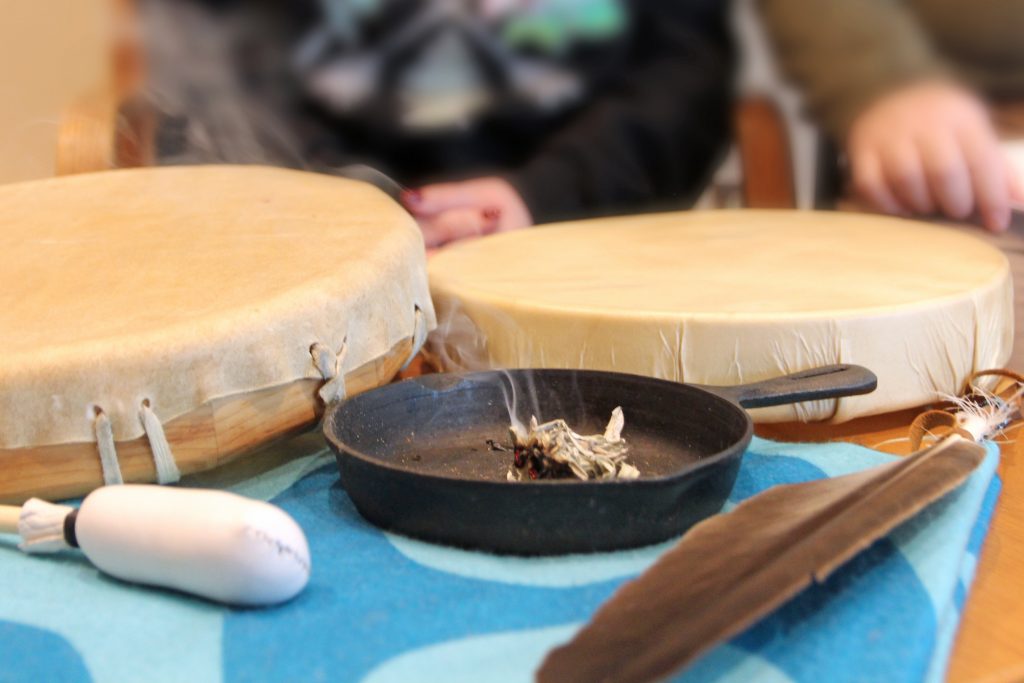Weekly Smudging Ceremony
by Gina Fata
 One traditional Indigenous ceremony that promotes balance and well-being is smudging. Smudging involves burning sacred medicines like tobacco, sage, cedar, and sweetgrass to cleanse the mind, body, and spirit.
One traditional Indigenous ceremony that promotes balance and well-being is smudging. Smudging involves burning sacred medicines like tobacco, sage, cedar, and sweetgrass to cleanse the mind, body, and spirit.Originally published in the January 2024 edition of the Walleye Magazine (Page 86)
Have you ever heard the saying “You can’t pour from an empty cup”? It is a reminder that we need to take care of ourselves before we can help others. This is especially true in the workplace, where self-care is crucial for maintaining a healthy work-life balance. While self-care may be a trendy topic these days, it has been a part of Indigenous cultures for generations.
One traditional Indigenous ceremony that promotes balance and well-being is smudging. Smudging involves burning sacred medicines like tobacco, sage, cedar, and sweetgrass to cleanse the mind, body, and spirit. It is a powerful tool for reducing stress, improving mood, and promoting relaxation. When we smudge, we are taking time to pause and become calm, grounded, and present in the moment. Many people find it to be a helpful tool to improve their well-being.
Staff at the Thunder Bay Regional Health Sciences Centre (TBRHSC) now have the opportunity to participate in weekly smudge ceremonies. The wellbeing of staff at TBRHSC is critical to the hospital’s function, culture, and patient experience. The hospital is hosting weekly smudge ceremonies for staff to reconnect with themselves and have a moment of self-care during their busy day. By attending smudge ceremonies, staff can clear their minds and emotions, release negative thoughts and feelings, and reconnect with themselves. Patients who are cared for by staff who are healthy will receive better care and experience empathy, compassion, and respect in every encounter.
The smudge ceremonies are led by Annette Klement, cultural safety educator, and Elder Kerry McLaughlin, spiritual care associate. Participants will not only experience the smudging ceremony but also learn about Indigenous culture through teachings, singing, and the hand drum. “The spirit lives within the drum,” explains McLaughlin. For those who are unable to attend, Elders can come to them to perform a smudge ceremony.
Many patients, their families, and caregivers who access care at the TBRHSC practice traditional ceremonies, including smudging, as a part of the healing process. “This is a starting point for cultural education and knowledge. It will allow for cultural safety within the hospital with staff being able to better connect with their patients,” says Klement.
The weekly smudge ceremony will allow staff to experience and learn about Indigenous culture. When staff can partake in, and learn, cultural teachings, they will better interact with patients and families. When your healthcare team understands your culture and traditions, it allows you to feel safe and seen. This is key in TBRHSC’s vision of “exceptional care for every patient, every time.”
Smudge ceremonies are also available to patients wanting to access traditional ceremonies for their healing journey. Those who wish to partake in a smudge can have a member of their care team contact Spiritual Care or the Indigenous Collaboration Department to make arrangements.
The smudge ceremony will take place every Monday and Friday, allowing staff to start and end their week in a good way.